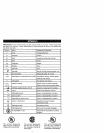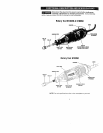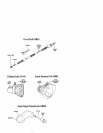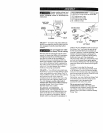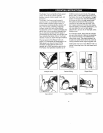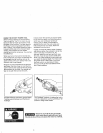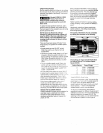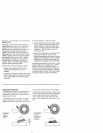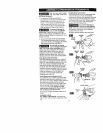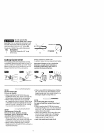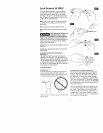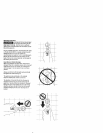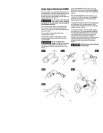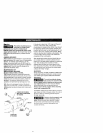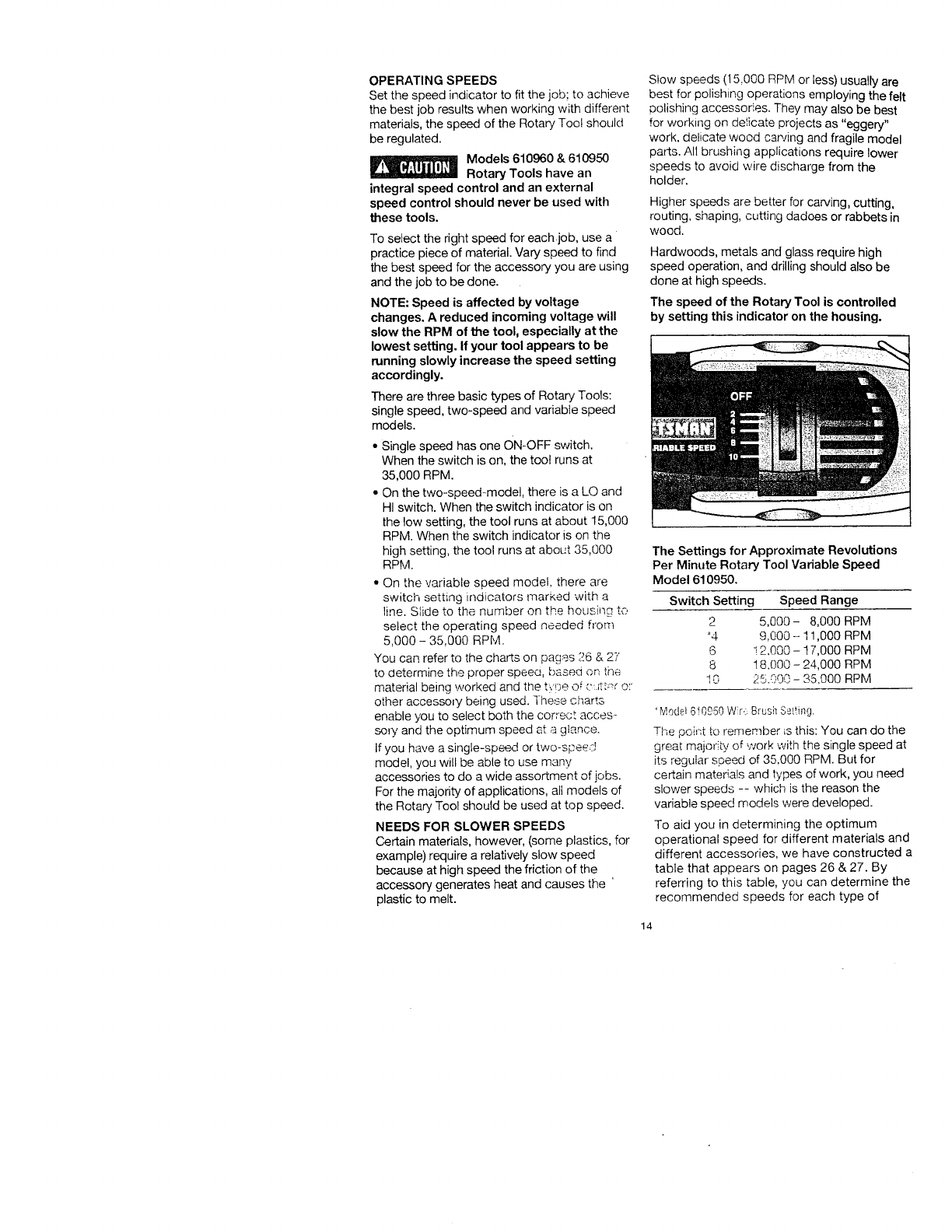
OPERATJN G SPEEDS
Set the speed indicator to fit the job; to achieve
the best job results when working with different
materials, the speed of the Rotary Tool shoukt
be regulated.
Models 610960 & 610950
Rotary Tools have an
integral speed control and an external
speed control should never be used with
these tools.
To select the right speed for each job, use a
practice piece of material. Vary' speed to find
the best speed for the accessory you are using
and the job to be done.
NOTE: Speed is affected byvoltage
changes. A reduced incoming voltage will
slow the RPM of the tool, especially at the
lowest setting. Ifyour tool appears to be
running slowly increase the speed setting
accordingly.
There are three basic types of Rotary Tools:
single speed, two-speed and variable speed
models.
• Single speed has one ON-OFF switch,
When the switch is on, the toot runs at
35,000 RPM.
• On the two-speed-model, there is a LO and
HI switch. When the switch indicator is on
the low setting, the tool runs at about 15,000
RPM. When the switch indicator is on the
high setting, the tool runs at about 35,000
RPM.
• On the variable speed model, there are
switch setting indicators marked with a
line. Slide to the number on the housing to
select the operating speed needed from
5,000 - 35,000 RPM.
You can refer to the charts on pages ?6 & 27'
to determine the proper speea, based on the
material being worked and the t_!_e o; t': _tb_ro:_
other accessory being used. These charts
enable you to select both the correct acces-
sory and the optimum speed at a glance.
If you have a single-speed or two-sF-ee'd
model, you will be able to use many
accessories to do a wide assortment of jobs.
For the majority of applications, all models of
the Rotary Tool should be used at top speed.
NEEDS FOR SLOWER SPEEDS
Certain materials, however, (some plastics, for
example) require a relatively slow speed
because at high speed the friction of the
accessory generates heat and causes the '
plastic to melt.
S_ow speeds (15,000 RPM or less) usually are
best for polishing operations employing the felt
polishing accessories. They may also be best
for working on delicate projects as "eggery"
work. delicate wood carving and fragile model
parts. All brushing applications require lower
speeds to avoid wire discharge from the
holder.
Higher speeds are better for carving, cutting,
routing, shaping, cutting dadoes or rabbets in
wood.
Hardwoods, metals and glass require high
speed operation, and drilling should also be
done at high speeds.
The speed of the Rotary Tool is controlled
by setting this indicator on the housing.
The Settings for Approximate Revolutions
Per Minute Rotary Tool Variable Speed
Model 610950.
Switch Setting Speed Range
2 5,000- 8,000 RPM
*4 9,000- 11,000 RPM
6 ! 2.000 - ! 7,000 RPM
8 18.000 - 24,000 RPM
I 0 25.000 - 35,900 RPM
"Model610950Wir::BrusilSeiting.
The point to remem.ber is this: You can do the
great majority of work with the single speed at
its regular speed of 35.000 RPM. But for
certain materials and types of work, you need
slower speeds -- which is the reason the
variable speed models were developed.
To aid you in determining the optimum
operational speed for different materials and
different accessories, we have constructed
table that appears on pages 26 & 27. By
referring to this table, you can determine the
recommended speeds for each type of
14




